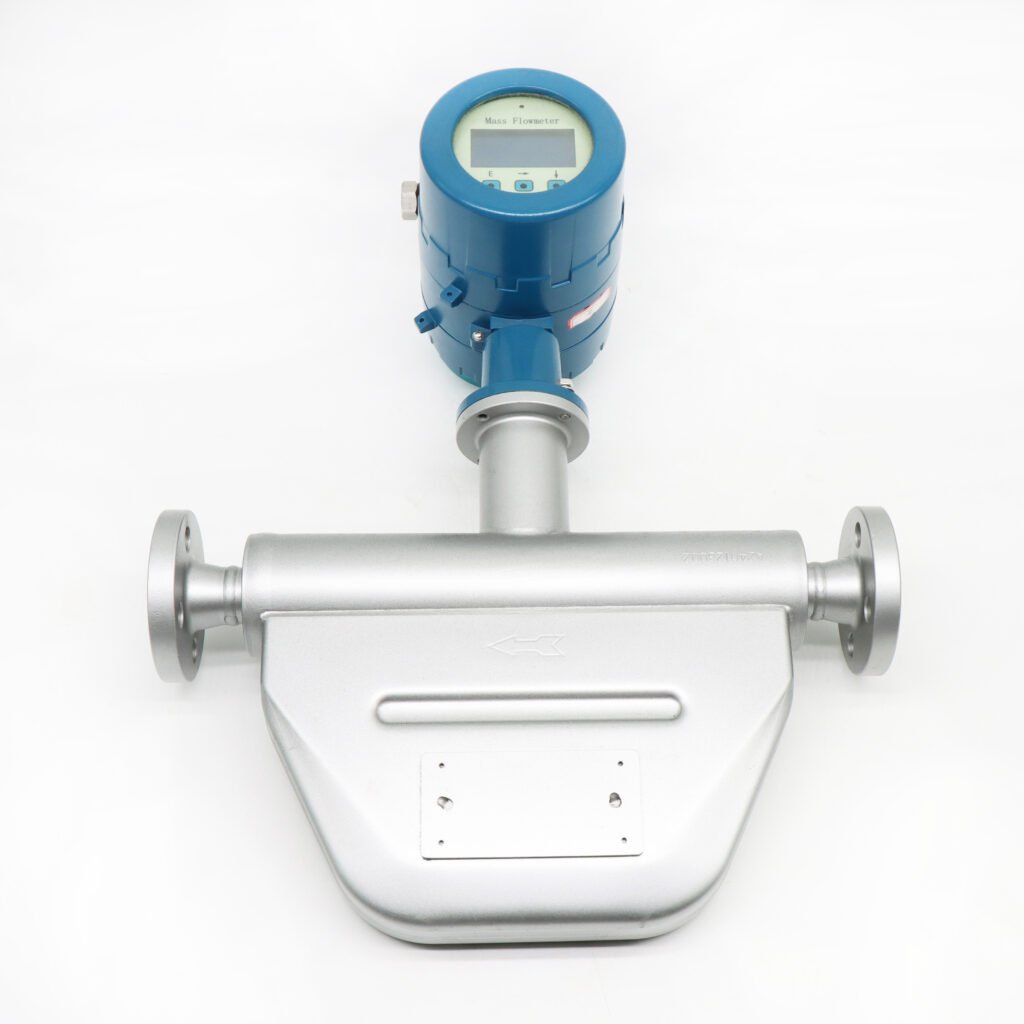Coriolis mass flow meters are known for their accuracy and reliability in measuring mass flow rate, density, and temperature of various fluids. However, proper installation is crucial to ensure optimal performance and to avoid errors in measurements. This article outlines key installation considerations and tips for Coriolis mass flow meters.
1. Distance from Electromagnetic Interference
When installing a Coriolis mass flow meter, ensure that the sensor is located at least 0.6 meters away from large transmitters, electric motors, or other sources of electromagnetic interference. The sensor relies on electromagnetic fields to function correctly, and nearby equipment may cause disruption to its operation. It is also vital to avoid placing the sensor near significant vibrations, as these can affect measurement accuracy.
2. Positioning for Liquid Measurements
When measuring liquids, the installation should maintain the sensor in a position that keeps the pipe fully filled with the liquid. This is essential to minimize the effects of density changes on the measurement. Additionally, for cleaning purposes, the sensor’s location should allow for liquid to be fully drained from the system. Avoid installing the sensor at the highest point of the pipeline, as this could lead to gas accumulation inside the sensor.
3. Positioning for Gas Measurements
For gas measurements, it is important to install the sensor in a location where liquid accumulation inside the sensor is avoided. This typically means positioning the sensor at the upper side of the pipeline to prevent condensation from accumulating in the flow tube.
4. Installation Orientation
The process requirements and the existing pipe layout generally dictate the orientation of the Coriolis mass flow meter. While the sensor’s installation angle does not directly affect its functionality, the following recommendations should be considered:
- For liquids: Install the sensor with the housing facing downward to prevent air from accumulating inside the flow tubes.
- For gases: Install the sensor with the housing facing upward to avoid the accumulation of condensate.
- For slurry or viscous liquids: Install the sensor vertically (like a flag) to prevent particle buildup inside the flow tubes. Additionally, ensure the flow is directed from the bottom upwards to avoid air pockets.
5. Flow Direction
Coriolis flow meters are capable of measuring the flow accurately, regardless of the direction. However, the normal flow direction is typically indicated by an arrow on the sensor, which should be followed to ensure correct operation.
6. Valve Placement
To facilitate zeroing of the flow meter, a shut-off valve should be installed downstream of the sensor. This helps to isolate the sensor during calibration and maintenance. It is also recommended to position the valve close to the receiving container to optimize operation. Avoid using flexible hoses between the sensor and the valve to prevent expansion or compression, which could cause measurement errors. For added protection, a control valve can be installed downstream to prevent cavitation or media depletion.
7. Two-Phase Gas-Liquid Flow
In cases where the process medium contains both gas and liquid phases, it is recommended to install the sensor with the housing facing downward, or to position it on a vertical pipeline. This configuration minimizes the risk of gas accumulating inside the flow tubes, ensuring more accurate readings.
8. Loading and Unloading Applications
For loading and unloading measurement applications, install the sensor with the housing facing upward or vertically. Additionally, install a one-way valve downstream to prevent backflow. The one-way valve should be placed as close to the sensor as possible. In certain situations where the process medium cannot be fully drained from the pipeline, the flag-style installation is usually advised.
The startup sequence for loading or unloading applications should be followed as per the below steps:
- Install shut-off valves upstream and downstream of the sensor.
- Close the upstream valve.
- Partially open the downstream valve.
- Slowly open the upstream valve to expel air and fill the sensor with the process medium.
- Once the flow system starts measuring, gradually open the downstream valve until fully open.
Correct installation of Coriolis mass flow meters is essential to ensure precise measurements and to prevent errors caused by factors such as electromagnetic interference, gas accumulation, and incorrect positioning. Following the guidelines for installation will help optimize the performance of the flow meter and extend its operational lifespan.
If you want to know more about the flow meter or flow meter selection, please consult the Aister flow meter manufacturer email: sales@aistermeter.com for help.
Frequently Asked Questions (FAQs)
Q1: How far should the Coriolis sensor be from electric motors or transmitters?
A: The sensor should be installed at least 0.6 meters away from large electric motors, transmitters, or any source of electromagnetic interference.
Q2: Can the installation direction of the sensor affect measurement accuracy?
A: While the sensor is flexible in terms of orientation, it is important to install it following the recommendations for liquid, gas, and slurry measurements to avoid issues like air or liquid accumulation in the flow tubes.
Q3: Why is a shut-off valve needed downstream of the sensor?
A: The shut-off valve helps in zeroing the flow meter and isolating it for maintenance or calibration. It also prevents backflow and ensures accurate readings.
Q4: What should I do if the process medium contains both gas and liquid?
A: For gas-liquid two-phase flow, install the sensor with the housing facing downward or in a vertical orientation to prevent gas accumulation inside the flow tube.
Q5: How should I handle startup in loading and unloading applications?
A: The proper startup procedure includes installing valves, closing the upstream valve, and slowly opening the downstream valve to allow the sensor to fill with the process medium before measurements begin.

